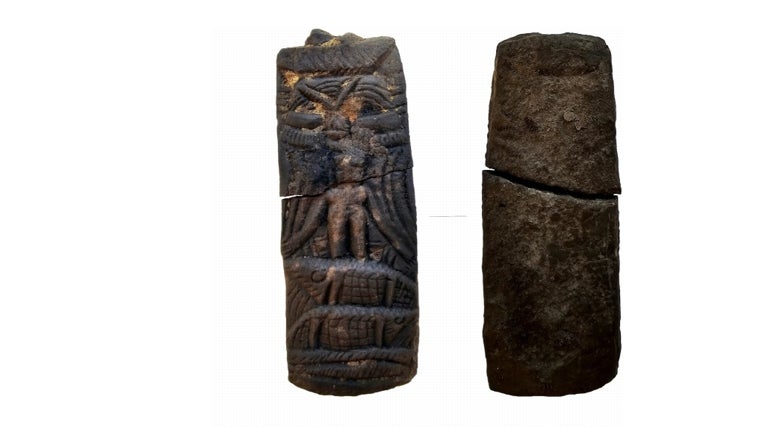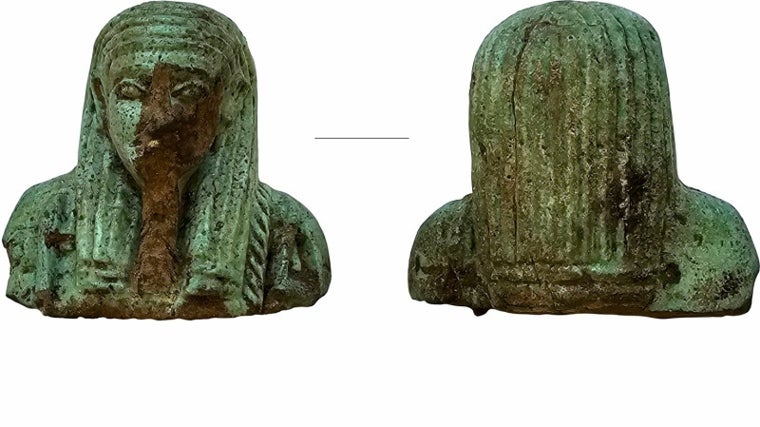A team of archaeologists from the University of Manchester has identified the ancient Egyptian city of Imet in the eastern Nile Delta.

For decades, the site of Tell el-Fara'in, in the eastern Nile Delta, was considered just another of the numerous ancient settlements scattered across this low-lying, humid zone of northern Egypt. However, a recent archaeological campaign led by researchers from the University of Manchester, in collaboration with Sadat City University and the Egyptian authorities, has substantially changed the perception of this site. What began as an exploratory intervention supported by satellite imagery has led to the discovery of well-preserved urban structures dating from the Late Ptolemaic to the Ptolemaic period, and has made it possible to identify with increasing certainty that the site corresponds to the ancient city of Imet, mentioned in scattered sources but until now without a specific confirmed location.
The archaeological intervention adopted a combined approach, integrating remote sensing with fieldwork. High-resolution satellite imagery identified anomalous concentrations of mud bricks beneath the surface, suggesting the existence of planned architecture in certain areas of the tell, the archaeological mound itself. Based on this, the team, led by Egyptologist Nicky Nielsen of the University of Manchester, defined the excavation areas, which quickly revealed large-scale residential structures and construction elements uncommon elsewhere in the country.
Among the most notable finds are the remains of several multi-level buildings known as "tower houses," a type of dwelling characteristic of the Nile Delta between the 7th century BC and the 1st century AD, but uncommon elsewhere in Egypt. These structures, equipped with exceptionally thick foundation walls, were designed to support several floors and accommodate a considerable number of people in confined spaces. "Their presence at Imet suggests a dense and urbanly complex city, with an organization designed to respond to population growth in a region where living space was limited by the hydrology of the delta," Nielsen explained in a statement released by the University.
 Relief found
UNIVERSITY OF MANCHESTER
Relief found
UNIVERSITY OF MANCHESTER
The excavations have also revealed infrastructure linked to the local economy, including a paved platform used for processing or storing grain, as well as enclosures interpreted as corrals or stables. These elements point to an economic system centered around intensive agriculture and surplus management, probably integrated into regional exchange networks. The discovery of specialized spaces within a residential setting also suggests a close coexistence between domestic and productive functions, a feature that has been documented in other urban centers of late Egypt, albeit at a lesser level of preservation.
In the western sector of the site, traditionally associated with the religious area, a large structure dating to the Middle Ptolemaic period has been identified, built of mud brick and with a solid base covered with plaster on a limestone floor. This building overlaps a section of what was once a processional road leading to the temple of the goddess Wadjet , tutelary deity of the delta and a central figure in the local pantheon. The interruption of this road and the construction of new buildings on its original route are interpreted as an indication of the abandonment or transformation of the Wadjet cult sometime in the 3rd century BC, which would fit with the political and religious changes that accompanied the consolidation of Greco-Macedonian rule in Egypt.
According to Mohamed Ismail Khaled, Secretary-General of Egypt's Supreme Council of Antiquities, "The artifacts discovered in the temple area confirm that Tell el-Fara'in was not only a residential settlement, but also a regionally significant cult center, whose evolution reflects the tensions between local tradition and new religious orders introduced from the Hellenistic period onward." This symbolic dimension of the settlement is corroborated by the array of ritual objects found in different sections of the site.
 Remains found
UNIVERSITY OF MANCHESTER
Remains found
UNIVERSITY OF MANCHESTER
Among the most significant pieces are a funerary figurine, known as an ushabti, made of green faience, dating to the 26th Dynasty and decorated with finely drawn inscriptions; a stele depicting the god Harpocrates, in a protective attitude over crocodiles, surrounded by apotropaic iconography including snakes, scorpions, and the image of the god Bes; and a bronze sistrum decorated with double heads of the goddess Hathor, which refers to the realm of ritual music and liturgical practices associated with the temple. This type of material repertoire allows us to reconstruct not only the religious beliefs that were in force, but also the ways in which these beliefs were expressed in everyday life, with objects intended for both private and ceremonial use.
The archaeological work at Tell el-Fara'in has been made possible by a multidisciplinary team comprised of specialists from various institutions , including the University of Liverpool and the University of California, Los Angeles. In addition to Nielsen, the mission also includes researchers such as Hamada Hussein of Sadat City University, as well as Egyptian technicians with extensive experience in excavations in the delta region. This extensive international collaboration has not only allowed for progress in the excavation, but also the application of recording and analysis technologies that enrich the documentation of the site and open new lines of research into its urban evolution.
 Remains found
UNIVERSITY OF MANCHESTER
Remains found
UNIVERSITY OF MANCHESTER
The identification of Imet and the volume of information recovered so far place the site in a prominent position within the study of Egypt in the first millennium BCE. Until recently, knowledge of the delta's cities was hampered by the destruction of stratigraphic contexts, the difficulties of preservation in humid environments, and the absence of precise textual references. In this context, Tell el-Fara'in emerges as a key source for rethinking the urban, economic, and religious dynamics of a region that was, for centuries, the agricultural and logistical hub of the country.
However, despite the progress, the researchers emphasize that this is an early phase of work and that a large part of the site remains unexplored. Therefore, the coming years will be dedicated to the systematic excavation of other areas of the settlement, as well as the detailed analysis of the ceramic, epigraphic, and bioarchaeological material recovered so far. As Nielsen noted, "The case of Imet shows how, even in widely studied regions like Egypt, entire cities remain to be rediscovered, and with them, new ways of understanding history."
ABC.es




